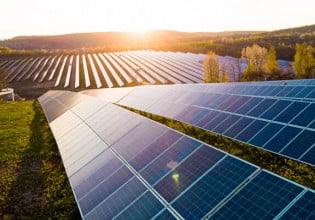Key Technologies for Applying the IoT to the Smart Grid
Learn about the requirements for using the IoT with the smart grid and specific application areas.
Grid refers to the electrical network that provides power to the end-user by facilitating supply from the generation end to the consumption end. A smart grid is an approach in which the user's safety should be ensured while monitoring, updating, and reliably distributing electricity by adding smart meters and monitoring systems to the power grid to ensure communication between suppliers and consumers [1].
The smart grid topology needs to adapt and shift from a centralized source to a distributed topology to absorb different energy sources dynamically. Several countries have initiated efforts toward smartening their electricity systems; however, this requires additional investment and planning to achieve a smarter grid. Read on to learn more about the requirements for using IoT in smart grid and its applications.
The Smart Grid in Action
Smart grids include electricity networks that comprise transmission and distribution systems and interfaces with the generation, storage, and consumers. It uses information and communication technologies to gather and act on the information in an automated manner to enhance the efficiency, reliability, economics, and sustainability of the generation and distribution of electricity [1].
This demands the need to track real-time energy consumption and demand to the energy supply, leading to the deployment of more remote sensing equipment to measure, monitor, and communicate. . It is an evolving set of technologies that will be deployed at different rates in various settings worldwide, and it depends on the compatibility with the existing technologies, regulatory developments, and investment frameworks.
IoT and the Smart Grid
Smart grid forms the key aspect of an IoT framework that can remotely monitor and manage almost everything. It is critical to help build a clean, secure and efficient future. The Internet of Things (IoT) has the power to reshape the way we think about cities across the world [2]. It facilitates the connection of people and governments to smart city solutions with the invention of smart grid technology that is designed to improve upon and replace the older grid architecture. This is accomplished using a network of transmission lines, smart meters, distribution automation systems, transformers, substations, sensors, software, and other distributed components to cater to homes, business, and industrial needs.

Figure 1. Conceptual model of a smart grid [1]. Image used courtesy of Con Edison
A grid that is smarter will add resiliency to our electric power system and make it better prepared to address emergencies such as severe storms, earthquakes, and terrorist attacks. The smart grid will also allow for automatic rerouting when equipment failure or outages occur as it possesses a two-way interactive capability [3]. The conceptual model of a smart grid is illustrated in Figure 1 [1].
Key Technologies to Enable the Integration of the IoT to the Smart Grid
Communication Technologies. The use of IoT in the smart grid demands a few technologies and needs to satisfy some requirements. The main one includes key communication technologies to receive and transmit the acquired information related to the state of smart grid devices. They should also cater to the communication technology standards, either short-range or long-range. Examples of short-range communication technologies include Bluetooth, Zigbee, and other ultra-wideband technologies, whereas examples of long-range communication technologies include optical fiber, power line communications (PLCs), and wireless cellular networks [4].
There is a need for data fusion techniques as the resources of IoT terminals are limited, and it is difficult to send all the information across. It is necessary to enhance the efficiency of information gathering and also harvest energy. Energy harvesting for IoT applications translates to utilizing different equipment to monitor different parts of a smart grid. The other significant requirement is operating in harsh environments as IoT devices are typically installed in high-voltage transmission lines or substations. This leads to stringent requirements on the sensitive components and needs to make them resistant to adverse environmental conditions.
The IoT applications generally need to satisfy requirements such as reliability and self-organization. IoT devices should be chosen such that the environmental issues that affect its performance and reliability are adequately addressed. Along with the reliability aspect, another key method to implement is security. It must transmit, store and manage data while avoiding the leakage and loss of information [4]. A key component of IoT in smart grids is the sensor. It is used to measure current, voltage, temperature, power, frequency, and other signals. It facilitates the delivery of raw information for processing, transmitting, and analyzing.
Key references:
1. Dombrovskyi et. al., Internet of Things for Smart Energy Grid, 2019
2. Building the Smart Grid: IoT in Energy Management and Monitoring
3. What Is the Smart Grid and How Is It Enabled by IoT?






